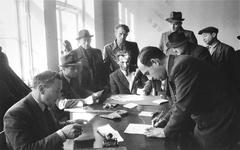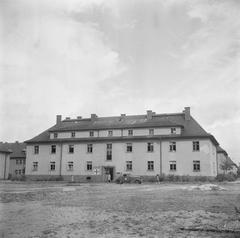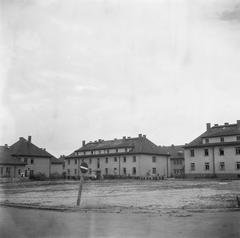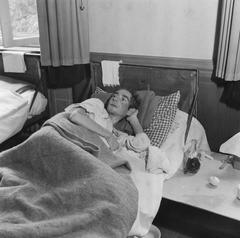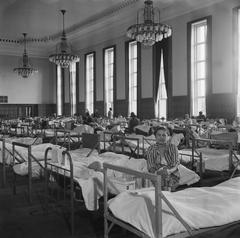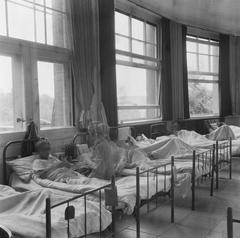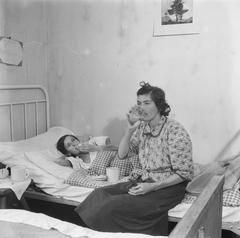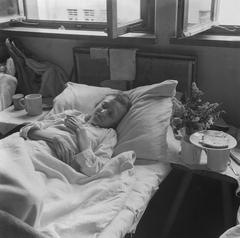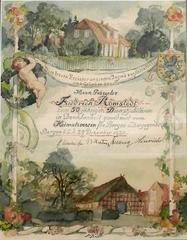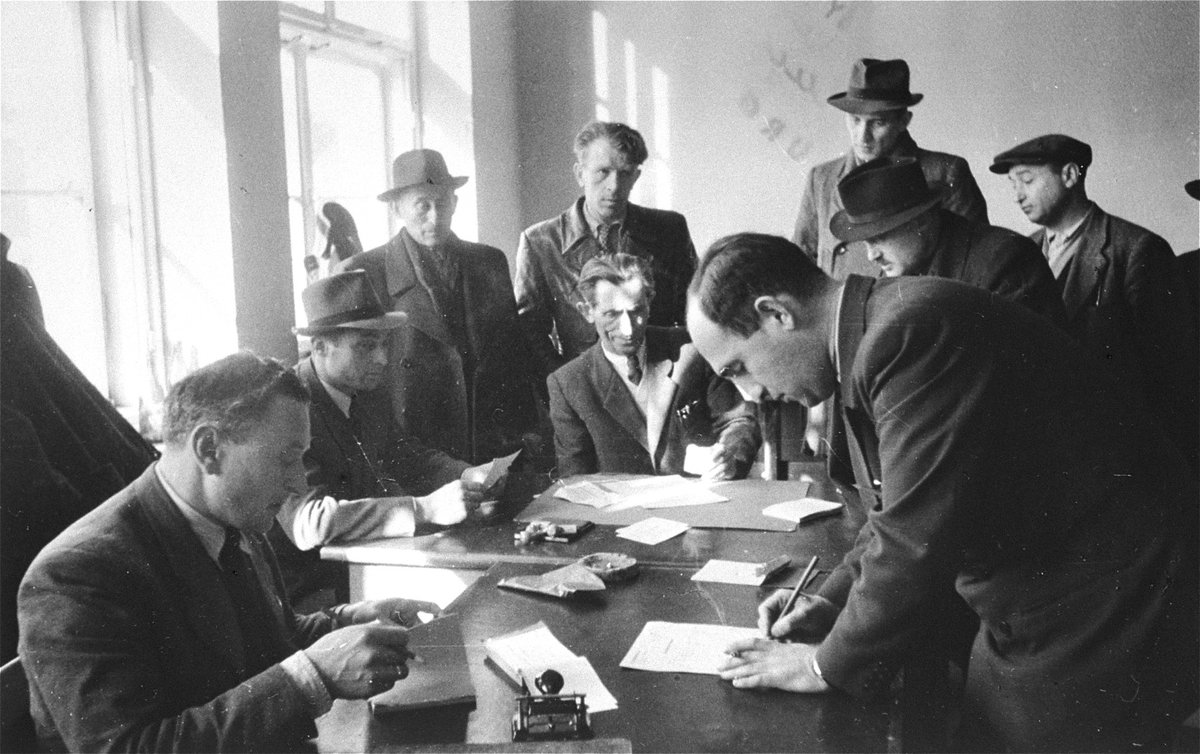
Bergen-Belsen Displaced Persons Camp Visiting Guide: Tickets and Hours
Date: 15/06/2025
Introduction
Bergen-Belsen is one of Germany’s most important sites of remembrance, bearing witness to the tragedies of World War II and the resilience of Holocaust survivors. Established first as a prisoner-of-war camp in 1940, it later became a Nazi concentration camp, and after liberation in 1945, it served as a Displaced Persons (DP) camp for survivors with no home to return to. The present-day Bergen-Belsen Memorial in Lohheide, Lower Saxony, preserves this layered history through comprehensive exhibitions, memorials, and educational programs. Visitors experience a solemn and educational journey that honors the victims and survivors, with facilities designed for accessibility and reflection. This guide provides detailed, up-to-date information on the site’s history, visiting hours, ticketing, accessibility, and tips for a meaningful visit (Bergen-Belsen Memorial Visiting Hours, Tickets & Guide to Lohheide Historical Site; Visiting Bergen-Belsen: History, Tickets, and Travel Tips; Significance of the Bergen-Belsen DP Camp).
Table of Contents
- Introduction
- Historical Overview: Origins and Transformation
- Visitor Information
- Memorial Site Highlights
- Nearby Attractions and Travel Tips
- Frequently Asked Questions (FAQ)
- Conclusion
- References and External Links
Historical Overview: Origins and Transformation
Bergen-Belsen’s history is marked by successive phases of human suffering and survival:
-
1940–1943: Prisoner-of-War Camp
Initially established for French and Belgian soldiers, the camp soon housed around 20,000 Soviet POWs, many of whom perished due to starvation and disease (Jewish Virtual Library). -
1943–1945: Concentration Camp
Bergen-Belsen became a concentration camp holding mostly Jewish prisoners, some slated for exchange for Germans abroad. Notable exchanges included 222 Jews permitted to immigrate to Palestine and about 1,500 Hungarian Jews to Switzerland. However, most prisoners suffered and died before liberation. -
1945–1950: Displaced Persons Camp
After British forces liberated the camp in April 1945, Bergen-Belsen was repurposed to shelter Holocaust survivors and other displaced individuals. It became a crucial site for recovery and rebuilding, operating until 1950 (Significance of the Bergen-Belsen DP Camp).
Visitor Information
Hours and Admission
- Memorial Grounds: Open daily, year-round.
- Documentation Centre:
- October–March: 10:00 a.m. – 5:00 p.m.
- April–September: 10:00 a.m. – 6:00 p.m.
- Closed during Lower Saxony’s Christmas holidays.
Admission:
Entry to the Bergen-Belsen Memorial, Documentation Centre, and exhibitions is free. No tickets are required (Bergen-Belsen Memorial Visiting Hours).
Guided Tours and Accessibility
-
Guided Tours:
Available for individuals and groups in multiple languages. Advance registration is recommended for groups and educational institutions. Tours are led by experienced guides and can focus on specific historical aspects (Bergen-Belsen Guided Tours). -
Accessibility:
The Documentation Centre and main paths are wheelchair accessible. Some outdoor areas have uneven ground; staff provide assistance as needed. Facilities include accessible restrooms and materials for visually impaired visitors (large print, Braille in German, audio guides).
Memorial Site Highlights
Documentation Centre
The Documentation Centre, opened in 2007, is the heart of the visitor experience. It features:
- A chronological exhibition on the site’s history as a POW, concentration, and DP camp.
- Multimedia displays with survivor testimonies and original artifacts.
- A 25-minute documentary with multilingual options.
- A library with over 8,000 publications (for on-site use).
- Bookshop and café (Bergen-Belsen Documentation Centre).
Memorial Grounds and Monuments
- Mass Graves and Monuments:
Thirteen mass graves and numerous memorial markers commemorate thousands of victims. The central obelisk and inscription wall are key features, along with memorials for various victim groups (Lonely Planet). - Anne Frank Memorial:
A symbolic gravestone honors Anne Frank and her sister Margot. - Haus der Stille (House of Silence):
A dedicated building for quiet reflection. - Special Monuments:
Additional memorials recognize victims of different nationalities and faiths (WhichMuseum).
Nearby Attractions and Travel Tips
- Getting There:
The memorial is located at Anne-Frank-Platz, 29303 Lohheide, Germany, about 60 km north of Hanover and close to Celle. It is accessible by car (parking available) and by public transport via train to Celle or Bergen, then local bus or taxi (Bergen-Belsen Memorial Directions). - Nearby Sites:
Explore Celle’s Old Town, the Bomann Museum, and other regional attractions. - Travel Tips:
- Allow 3–4 hours for a thorough visit.
- Dress for the weather and wear comfortable shoes.
- Maintain respectful conduct; photography is permitted but should be discreet near graves.
Frequently Asked Questions (FAQ)
Q: Is there an entrance fee or do I need tickets?
A: Admission is free; no tickets are required.
Q: What are the opening hours?
A: Documentation Centre: 10:00 a.m.–5:00 p.m. (Oct–Mar), 10:00 a.m.–6:00 p.m. (Apr–Sep), closed during Christmas holidays.
Q: Are guided tours available in English?
A: Yes, tours are offered in multiple languages with advance booking.
Q: Is the site wheelchair accessible?
A: Yes, the Documentation Centre and most paths are accessible. Some outdoor areas may be challenging.
Q: How can I reach the site by public transport?
A: Take a regional train to Celle or Bergen, then use a local bus or taxi.
Q: Are there commemorative events?
A: Annual events include the April 15 Liberation Day ceremony and educational workshops (Bergen-Belsen Stiftung Events).
Conclusion
A visit to the Bergen-Belsen Memorial is a powerful act of remembrance and education. With free admission, comprehensive exhibitions, and a respectful environment, the memorial offers a profound opportunity to reflect on the Holocaust, honor its victims, and engage with history. Planning ahead—by reviewing visiting hours, arranging guided tours, and considering nearby attractions—will help you make the most of your visit. Stay updated via the official Bergen-Belsen website and consider using the Audiala app for interactive tours and additional historical context. By bearing witness, we help ensure history is not forgotten and contribute to ongoing efforts against intolerance and discrimination (Bergen-Belsen Memorial Official Site; Visiting Bergen-Belsen: History, Tickets, and Travel Tips; Significance of the Bergen-Belsen DP Camp).
References and External Links
- Visiting Bergen-Belsen: History, Tickets, and Travel Tips, 2025, Jewish Virtual Library
- Significance of the Bergen-Belsen DP Camp, 2025, Bergen-Belsen Stiftung
- Bergen-Belsen Memorial Visiting Hours, Tickets & Guide to Lohheide Historical Site, 2025, Bergen-Belsen Stiftung
- Practical Visitor Information, 2025, Bergen-Belsen Stiftung
